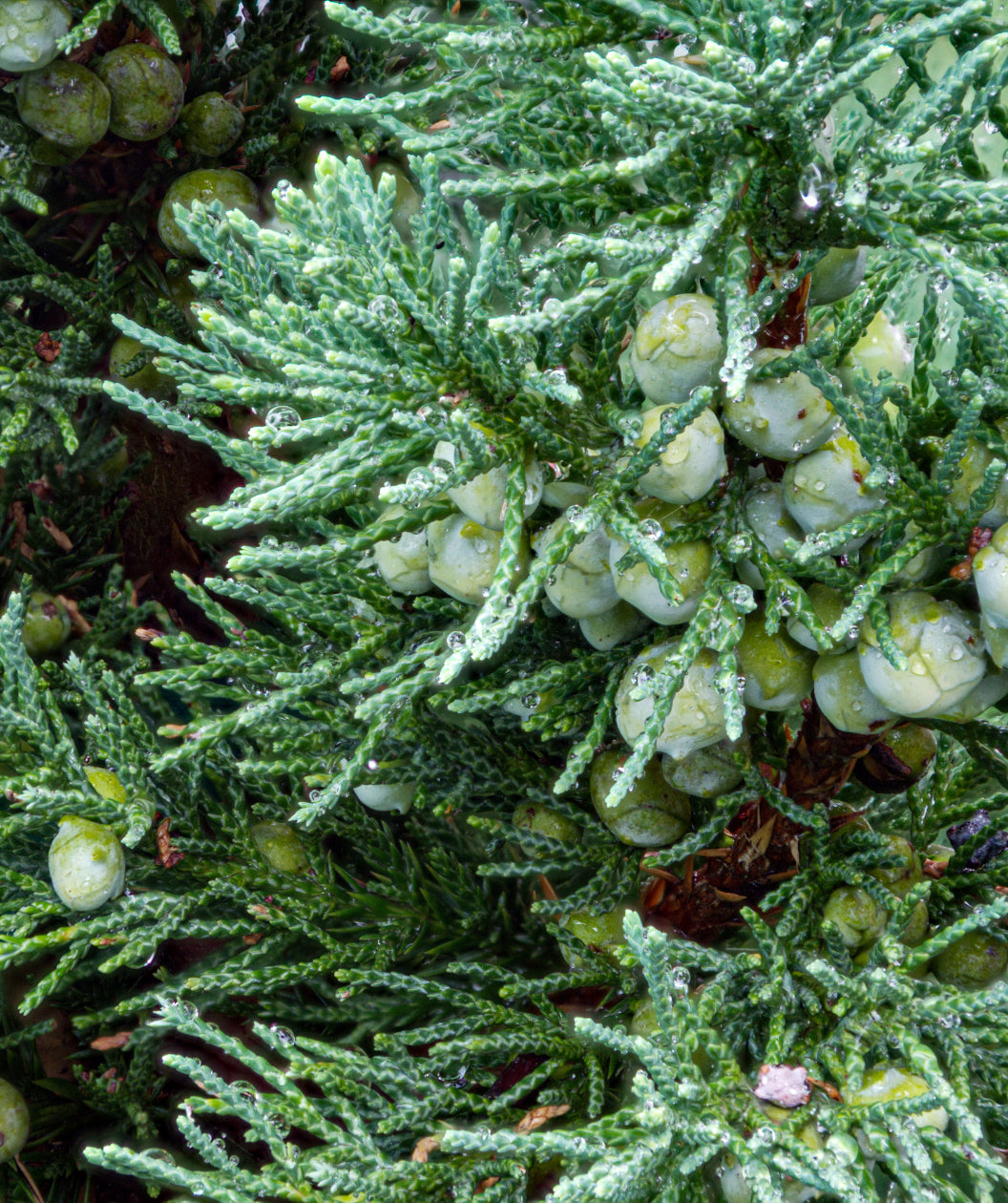IT'S FOR THE BIRDS
FEATURES:
- Blue-green evergreen foliage all season long
- In fall, silver-blue berries appear; a favorite of the birds
- Its fragrant wood is widely used in furniture building
- With its dense growth habit, it is a wonderful option for a privacy screen
- Hand Selected, Fresh from the Grower
- Ships on our trucks because of the size of the tree - does not fit in a box
Growth Facts
- Hardiness Zone: 2 - 9
- Mature Height: 40-50' tall
- Mature Width: 8-20' wide
- Exposure: Full Sun
- Spacing: 15-20' apart
IT'S FOR THE BIRDS
FEATURES:
- Blue-green evergreen foliage all season long
- In fall, silver-blue berries appear; a favorite of the birds
- Its fragrant wood is widely used in furniture building
- With its dense growth habit, it is a wonderful option for a privacy screen
- Hand Selected, Fresh from the Grower
- Ships on our trucks because of the size of the tree - does not fit in a box
Growth Facts
- Hardiness Zone: 2 - 9
- Mature Height: 40-50' tall
- Mature Width: 8-20' wide
- Exposure: Full Sun
- Spacing: 15-20' apart
Why plant Eastern Red Cedar?
One of the very best trees for bird-lovers! With its craggy branches and evergreen foliage, Eastern Red Cedar provides a beautiful safe haven for birds. Cardinals, robins, Song Sparrows, warblers, and mockingbirds may nest in its branches, and many other birds take temporary refuge in it from the elements and from predators. In fall, songbirds flock to it for another reason—female trees bear silvery-blue berries that birds devour. The Cedar Waxwing is such a fan of them that it takes its name from this tree! Mockingbirds, catbirds, robins, bluebirds, grosbeaks, and Purple Finches are also drawn to the nourishing fruits.
The Eastern Red Cedar Tree has been bringing welcome greenery to the winter landscape of what is now the midwestern and eastern U.S. for thousands of years. It is native from South Dakota to Florida. Pioneers appreciated Red Cedar for its rot-resistant wood and often used it to make long-lasting fence posts and shingles. The fragrant lumber has also been a favorite for lining closets and chests of drawers. For a hundred years, the heartwood of this tree was forged into pencils, until all of the choice timber was used up, and pencil manufacturers turned to the California Incense Cedar to replace it.
How to use Eastern Red Cedar in the landscape?
The Eastern Red Cedar is an aromatic evergreen with a variety of uses. This lovely tree can be used as a shelter-belt from harsh weather. Some varieties of Eastern Cedar are used as ornamental pieces in many landscapes. Most commonly known to the everyday household as a Christmas tree.
Planting Zones
Hardiness Zone: 2-9
How To Plant Eastern Red Cedar
Eastern Red Cedar is easy to please, and even novice gardeners will have success with it. Once established in the landscape, this durable tree endures extremes of heat and cold and periods of drought. It is suitable for soils that are rocky, clay-based (as long as they drain well), acid, or alkaline. Deer leave it alone, and air pollution doesn’t faze it. The only things it doesn’t care for are wet soil and shade. Red Cedar may serve as an alternate host to a disease called Cedar-Apple rust, a problem in Apple orchards among some varieties of Apples that aren’t resistant to it. The disease does little harm to the Cedar Tree and primarily only cosmetic damage to the Apple.
How To Water
When first planting your Eastern Red Cedar we recommend watering once every other day to promote its ability to fit in to its new home. After the first week you may reduce the amount of waterings required until fully established, then watering is only required during excessive heat waves due to its tolerance of drought.
How To Fertilize
Incorporate Elements Starter Plant Food granular form into the soil when planting. If planting in spring or summer, start fertilizing late fall using Elements Starter Plant food granular form on an annual basis each late fall. Continue this for the first three years to get your plant well established.
How To Prune
Having their own natural shape, the Eastern Red Cedar does not actually need pruning. However, depending on location in your landscape, you may want to trim the lower branches for easier access around the base of the tree.
How Does Shipping Work?
Bower & Branch Trees, the real BIG trees, don’t fit in a box! Our big trees, sizes XL and bigger, require expert delivery and care, that means our extra-large trees are shipped on Bower & Branch trucks. We are the only ones who know how to ship our big and bigger trees and plants with tender loving care. We deliver your trees and plants directly to you. Ask Bower & Branch about planting services – we'd be happy to assist in installation.
*For Big trees and Shrubs, Size XL and bigger: Review our Seasonal Shipping Timelines and Policy here.
Your trees and plants are grown across the United States at various Bower & Branch Growers. Depending on your location, your plant orders may be shipped from various locations. Please expect orders with multiple items to be delivered over a number of days as a result. Orders made up of numerous items or selections will not arrive at your home on the same day.
Shipping Delays:
From time to time, Bower & Branch Growers may determine to delay order shipment based on various factors for plant health. Weather in your region, as well as, where your plants are grown, is always considered when shipping. Extreme weather conditions may delay some or all of your order. Bower & Branch allows our Growers to make final shipping decisions based solely to benefit your trees and plants’ health and success.





